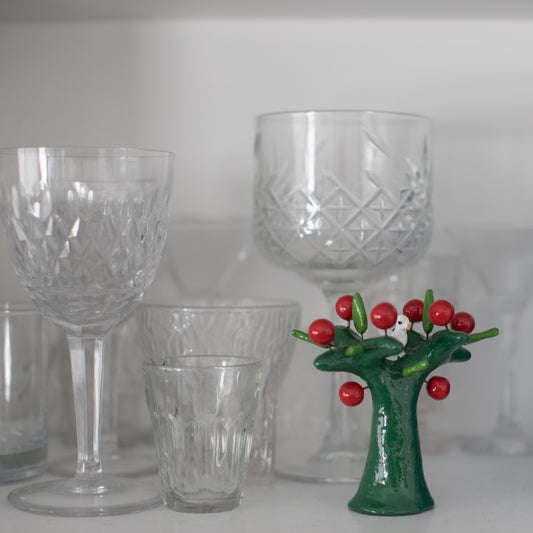
Land
-
Everything begins in the earth, and the pre-Hispanic American pottery tradition is proof of this. In Chile it has more than 2000 years of history and its existence was not only linked to utilitarian purposes but also ritual and symbolic. Its colors change from ocher to black, from turquoise to red, as the lands of each region also change. Their designs are zoomorphic, vegetal and geometric and vary with techniques, beliefs and times. Enjoy this collection of useful and beautiful objects made in Guangualí, Gorbea, Talagante, Pañul, El Loa, Elqui and Quinchamalí.
Care
-
Clay pieces for culinary use:
It is advisable to cure clay objects before their first use in order to close the pores of the clay, but you can also leave this process to time and use.
Oil curing: Using a paper napkin, paint the entire object with edible oil. Then put in the oven for 5 minutes on high heat and let cool before washing and using.
Curing with milk: For large pots and jugs, diluted milk with a tablespoon of butter can be boiled in them. The idea is that the milk boils and is in contact with the entire internal surface of the object for a few seconds. You can help yourself by stirring vigorously or tilting the object so you don't have to fill it with milk. After this, wash and dry normally.
Another useful recommendation for clay objects for culinary use is to separate them according to their use for salty or sweet foods, since this material is porous and absorbs flavors (that's the secret of the flavor they say!). When removing clay objects from the oven or fire, it is advisable to place them on a wooden board to avoid sudden changes in temperature that could break them. -
Stoneware ceramic pieces:
Stoneware ceramic pieces such as the Guanguali wonders should never be placed on direct fire (unlike the Quinchamalí clay pieces for example) because they break. Yes, they can be used in the oven and even in the microwave without any problem. When removing them from the oven, it is advisable to put them on a wooden board to avoid sudden changes in temperature.
Earth Collection
-
Celia Sugar Bowl
Regular price $19.000 CLPRegular priceUnit price / per -
 Sold out
Sold outCapri Bowl
Regular price $28.000 CLPRegular priceUnit price / per -
Mini Clarisa Tree
Regular price $30.000 CLPRegular priceUnit price / per -
Quitor glass
Regular price $51.000 CLPRegular priceUnit price / per




